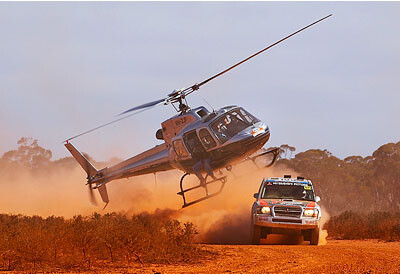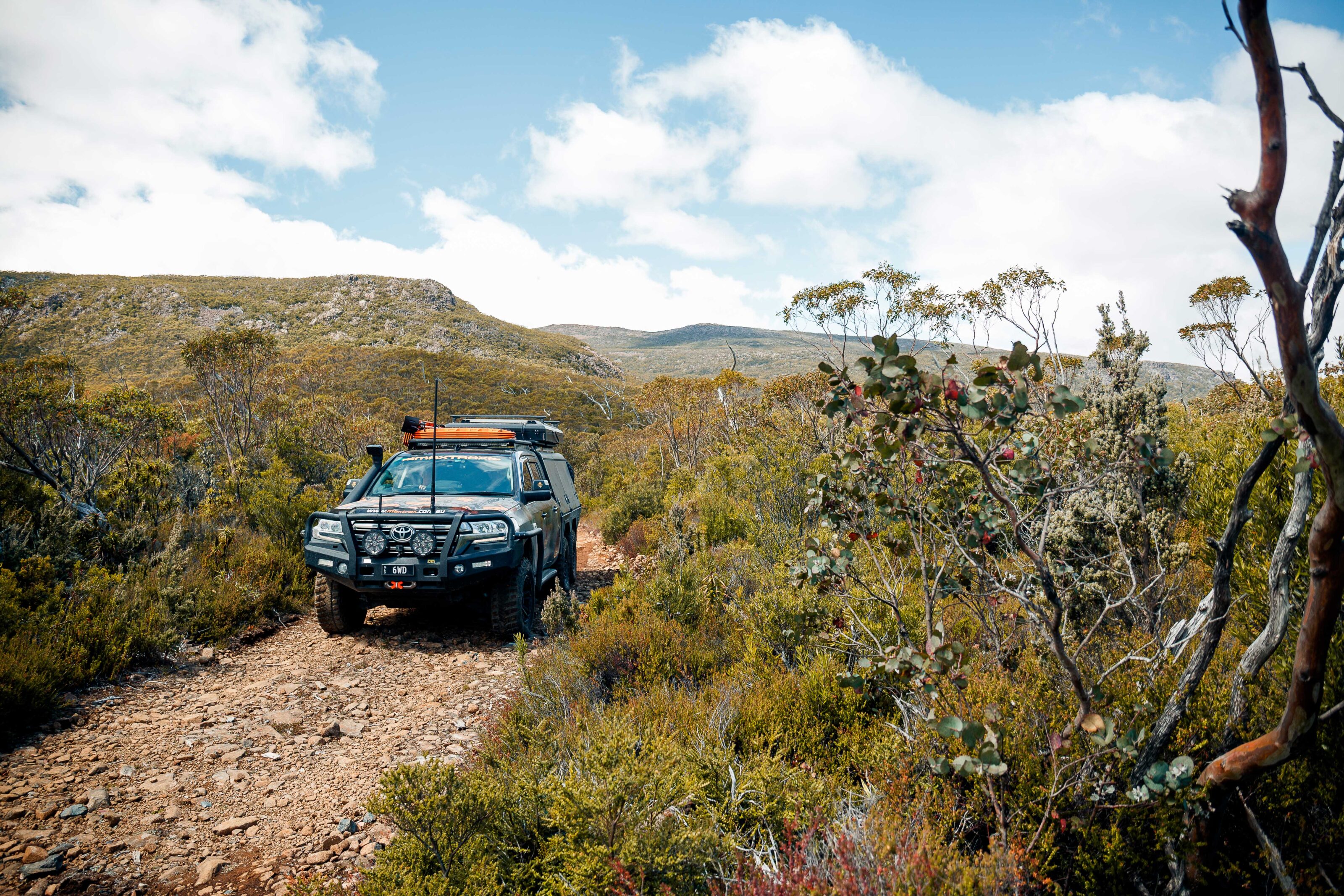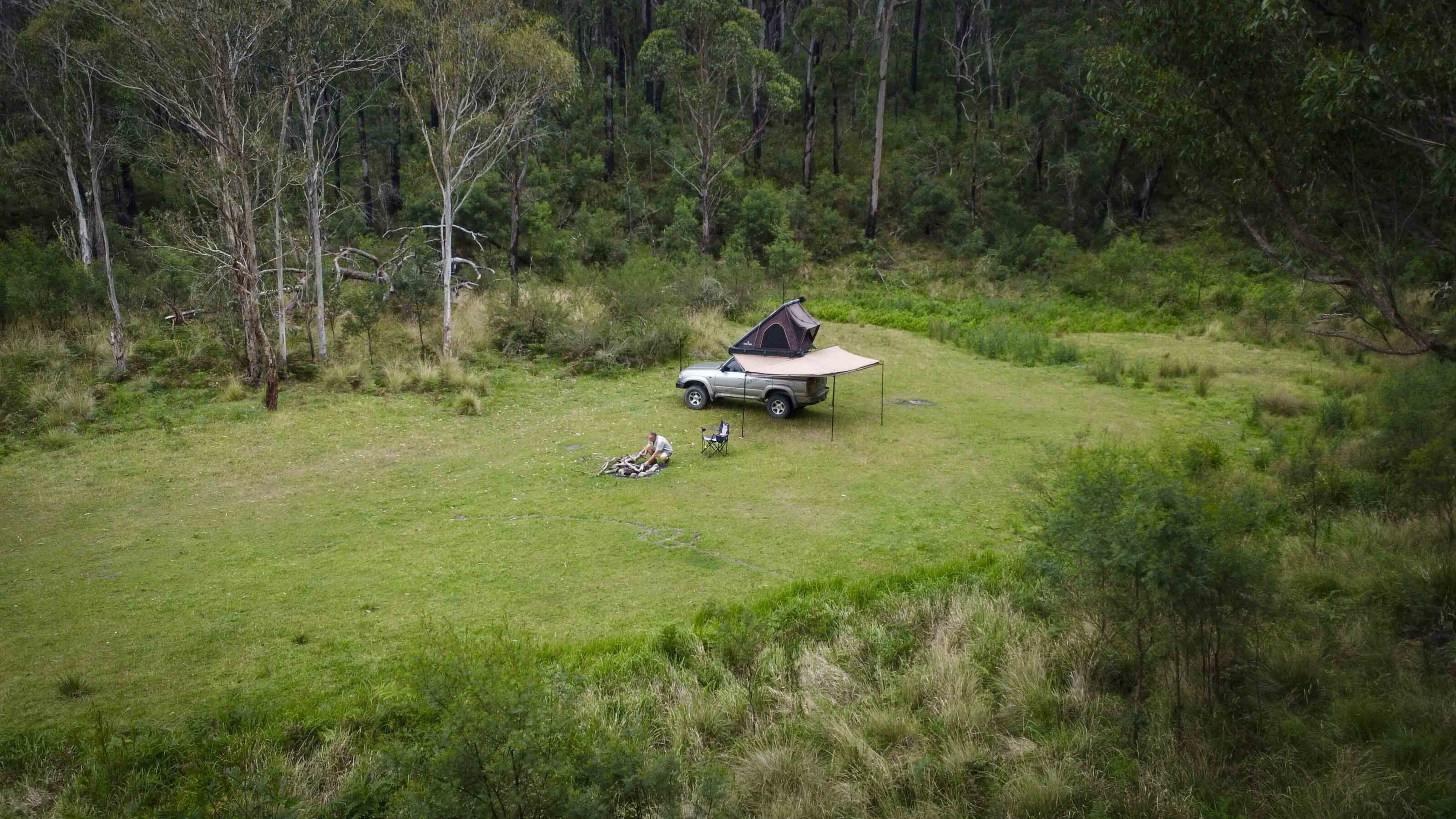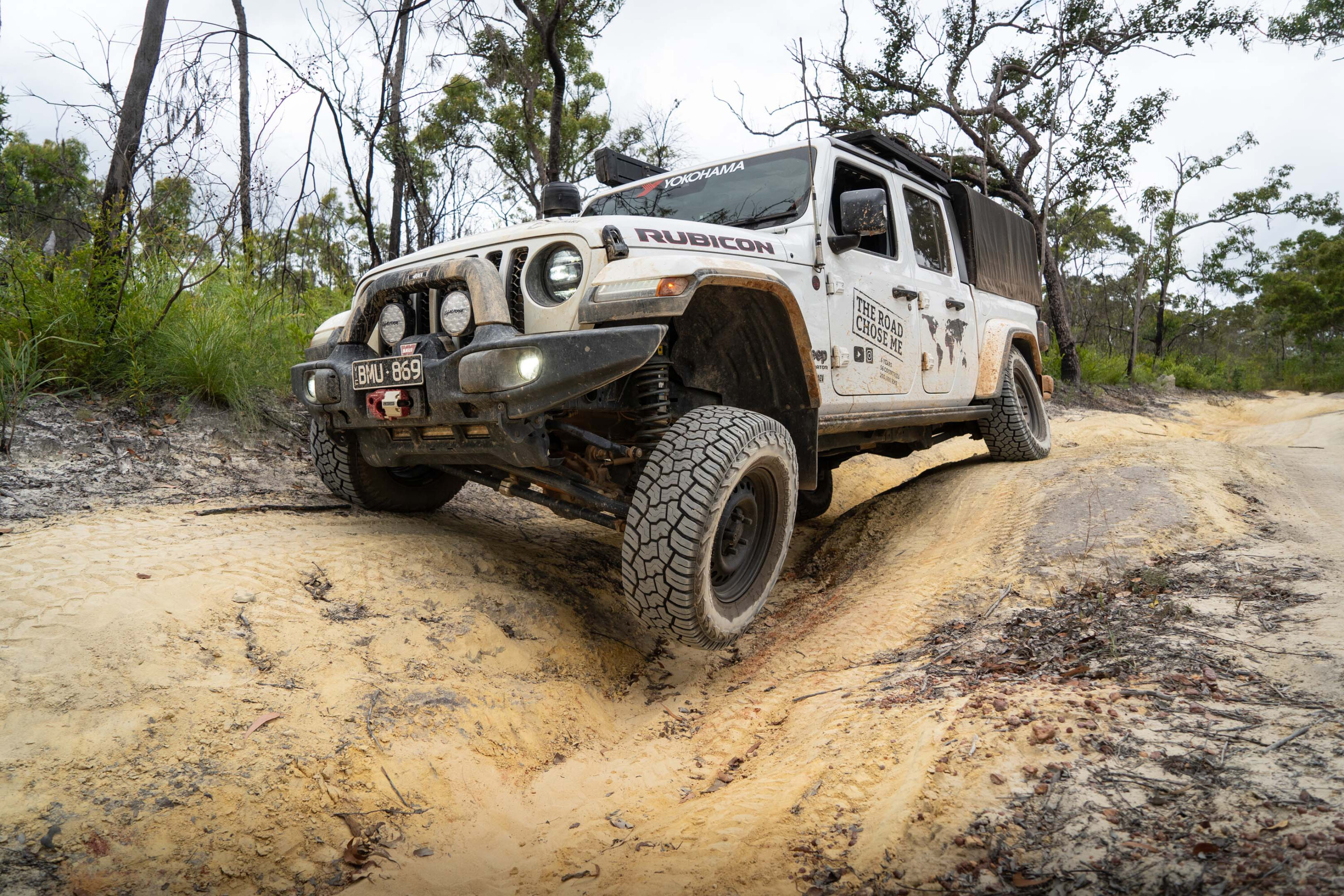Steve Riley spent much of his youth chasing the Australasian Safari crown on two wheels, endeavours that resulted in a string of second placings.
He then made the switch to four wheels with navigator John Doble in the left hand seat. Another second place.But, in 2008, it was finally Riley’s Round as he took the lead on Leg One and (almost) never looked back.Kalgoorlie Rtn (409km)First to face the starter and red hot favourite John ‘Hedge’ Hederics – a nine time winner (including six in the motorcycle division) – was also first to return to the Kalgoorlie bivouac having laid his elevated V8 Colorado on its side a paltry 80km into the 4500km marathon.‘Hedge’, now teamed with Kees Weel, was remarkably stoic about the fall which damaged the rollcage significantly enough for the scrutineers to veto any re-entry. But the cage did its job; both ‘Hedge’ and Kees were unscathed.Seeded a lowly seventeenth after missing the 2007 event, Steve Riley’s V8-powered Pajero battled the bulldust of slower competitors to set the fastest times on each of the three special stages that looped through the degraded moonscape surrounding Kalgoorlie.Reg Owen and Russell Cairns’ PatrolAbly navigated by John Doble the pair quickly rounded up everyone, bar Safari veterans Reg Owen and Russell Cairns in the remarkably stock Nissan Patrol, Des Harrington and seasoned rally navigator Sue McCready in the booming V8 powered Nissan ute, ‘Pelle’ Wallentheim and ‘Olle’ Ohlsson aboard the Isuzu Vehicross and old masters Bruce Garland and Hiroaki (Harry) Suzuki in the turbo-diesel Isuzu D-MAX.Riley now had clear air and it was also clear that barring any major mishaps the podiums would be filled by the above teams who were in a class of their own.Tony Quinn, a seasoned champion on tarmac, be it race or rally, was next but his twin-turbo Pajero suffered terminal overheating problems. Tony set the fourth fastest time on the final and longest stage of the day simply by hanging on to Riley’s dust as Tony had lost both his Terratrip sensors – and himself.Also in trouble were Geoff Olholm with clutch problems, Neil Dunn with a broken input shaft and the exotic mid-engine Freelander driven by Dave Rowland.If this attrition rate continued simply finishing would be worthy of a podium.Geoff Olholm suffered clutch problemsKalgoorlie to Sandstone (806km)The cancellation of stage six was a relief for many after surviving stage five, which Garland described as being, “carved out by a drunk on a D9 who won a slab of Bundy on the way home from the pub.”At the midday service Riley still held the lead but the V8 was losing oil in copious quantities. “I’ve packed a couple of ration packs and a Ralph magazine as we could be out there for a long time,” quipped a clearly concerned Riley. As he expected, Owen had dropped off the leader’s pace with Wallentheim and, way back in the pack, Neil Dunn each scoring a stage win.Husband and wife team Warren and Joy Ridge were suffering electrical gremlins. With the rev-limiter cutting in at 1200rpm it was a slow drive to Sandstone.Rowland’s temperamental Freelander had now decided to perform, allowing Dave to set good times. Jason Pierce and Brent Twaddle, however, were left wondering why they’d lost their fastest wheel when it took off alone into the mallee.If the lone pub in the hamlet of Sandstone was expecting a bonanza it was sorely disappointed as drivers fretted, navigators calculated and service crews laboured long into the night rebuilding their charges for another day of battle.Riley still held the overall lead but Wallentheim had won the day and the clear air on the next. He would be followed by Peter Glennie and Peter Clark in their 80 Series 5.0-litre LandCruiser and Geoff Olholm who’d managed to fit a new clutch. But, regardless of the day’s start order the top five had now led the field by 15 minutes.Darrell Knight on a CANAM Renegade in the Quad ClassSandstone to Meekatharra (600km)Course Director Ron Rigby had surveyed a course that kept the navigators busy. Even following the tracks of 40 motorcyclists all the Autos missed a call early in the first special stage before burrowing into the bulldust under brakes and smashing through the scrub to get back on the notes.Despite his worsening oil problems and starting the day back in sixth, Riley nailed the first two stages, slightly increasing his overall lead. The lurking Garland won the third stage and in doing so became the first competitor to ever win a stage under diesel power – and using less than fifty percent of the fuel the big V8s were gulping down.Now with all input shafts spinning freely Neil Dunn was making a comeback. With little hope of an outright position he was matching the times of the leaders, but the first really tough test lay ahead.At 160km, Special Stage Eleven wasn’t the longest but, winding its way through the rocky breakaway country encircling the Pockingningar Claypan, it was rumoured to be a car breaker. This didn’t seem to faze Des Harrington who was well on song winning his first stage of the event by over three minutes; moving him to second outright.The gap from first down to fifth was now almost half hour with the same margin back to the Kerry Thurley/Rob Fazulla Nissan Patrol. The last of the competitors not to strike any major mechanical woes or driver indiscretions was the beautifully prepared, V8-powered Land Rover Defender of Dave Fong and Kim Epton, now two hours adrift of the leader but remarkably unmarked.Dave Fong and Kim Epton took the 5.7-litre Land Rover Defender to 12th place overallThe Meekatharra Marathon (799km)Most crews correctly believed this leg would determine the outcome of the event as it was obvious that, barring unlikely floods, the race would be decided between Riley, Des Harrington and Wallentheim. The only dangers were the bulletproof Nissan of Reg Owen, chasing his second outright win, and Bruce Garland, chasing his sixth.The Marathon Stage was named because there would be no midday service other than strictly controlled refuels. The drivers were expected to cover almost 800km out to the Canning Stock Route and back again at an average speed higher than the state speed limit of 110km/h.It seemed an impossible ask, particularly when dark clouds blotted the sun and foul winds blew in from the east. Only the fastest motorcyclists completed the day before darkness halted racing.Australia’s best cross-country drivers shone like stars with Harrington winning the first stage, Riley the second and Wallenthiem the third (okay he’s a Swede) with Harrington winning the Leg by seven minutes over the hard charging, but out of contention, Neil Dunn.The Marathon Day also provided another twist back at the bivouac. Crews had only 60 minutes to repair and refettle their vehicles before they were off limits in parc ferme. However, other than Riley’s continuously conspicuous oil consumption, the lead cars sounded strong, even if they looked decidedly secondhand.We’re not worthy!Meekatharra to Mount Magnet (599km)Due to the previous day’s performance Harrington was first out the gate followed by Dunn and Riley, the sound of the three V8s bouncing off the escarpments as they skirted the saltpans. Riley won the first stage and, unconcerned about Dunn, who was under no pressure at all, kept in Harrington’s dust on the second stage before narrowly winning the third.But Garland could smell the oil from Riley’s Pajero and sense the pressure on Harrington and navigator Sue McCready. Garland will never settle for a podium if there’s any chance of a win and his prayers for rain had been answered. The Isuzu D-MAX was blessed with more torque than the man himself and Garland knew this would be to his advantage if the going got sloppy.What no-one knew at the time was that this final stage of the day would turn out to be the Safari’s penultimate special stage as the rain showers morphed into a solid blanket of water, washing out all traces of the tracks left by the motorcycles that had roostered through only minutes beforehand. Other than flashes of the primary colours of crash helmets at all points of the compass visibility was down to zero.“Go by the book” insisted Riley’s navigator, John Doble, as rain showered down through the broken roof vents onto his route notes, “Just trust me”.Doble’s demands prevailed and shortly they arrived at a ‘yellow’ gate (so marked because they have to be opened and closed by each competitor). Not only were they spot on course but, as luck would have it, a drenched Moto rider waved them through; their day was made, moving a further fifteen minutes ahead of Harrington who was still doing circle work in the mud. And, barring miracles, putting themselves beyond UHF range of Garland.As the rain continued to bucket down on the Mount Magnet bivouac the unofficial results had Riley euphoric enough to lash out on a final 20 litres of oil and admit that maybe, just maybe, this was the breakthrough.Garland’s crewMount Magnet to Geraldton (674km)As it turned out, Riley didn’t need all that oil. The bad weather continued, soaking the surrounding properties and, as the Safari has always depended on the good graces of property owners to run the event, all the day’s special stages were cancelled.No doubt competitors could have made it through but the damage to the tracks would have been substantial. More so, support from the zero cars, FIV, service and recovery teams would have been very sketchy. Thick morning fog and low clouds would have delayed the start and most competitors were happy to take to the bitumen for the run down to the coast.Geraldton to Perth (583km)With only one relatively short special section on the final return to Perth it was unlikely there would be any great changes to the standings. However, it has become a Safari tradition to put a ‘sting in the tail’ of the event and this year was no different.All the front runners had to do was survive but that didn’t stop them from having some serious fun through the sand dunes of the Navy Target Practice Range south of Cervantes.With nothing to lose and something to prove Neil Dunn won the final stage in seconds over the hour with the top four drivers all within a four-minute spread behind him. But, it was Riley first into the final control with Garland tapping his rear bumper – the only body panel that had remained undamaged on what had become known as the ‘Battle Scarred Galactica’.Many times the bridesmaid, Steve Riley had finally prevailed and navigator John Doble was equally happy after having navved for Steve since he made the switch from motorcycles to cars.Post Mortem to Perth PresentationJohn Hederics was on hand to congratulate the winners and commiserate with old mates such as Geoff Olholm, who might have been hoping for better after just missing out on a podium last year.The Suzuki Vitara of Bill Monkhouse and Andrew Booker was another that didn’t make the finish. However, the bad luck award must go to Jason Pearce and Brent Twaddle who got their Isuzu Vehicross as high as sixth after the Marathon Leg, broke an ‘unbreakable’ axle on Leg Five then a transfer case on Leg Seven.At least Brent had the pleasure of seeing his daughter finish and win the Most Adventurous Driver Award. The Robinson family were happy, both Beau and Brian collecting their second Finishers Medallion with the ‘old man’ winning his class. Malcolm George was also back (after 20 years) with his son and both must be satisfied with their top ten result.The veterans that didn’t quite make the podium – ‘Pops’ Glennie, Peter Clark, Reg Owen and Russell Cairns who’ve racked up almost 50 Safari’s between them – know enough about how to enjoy each day without too much concern about the results.‘Pelle’, ‘Olle’, Harry and Bruce are off to Dakar to the envy of all. Des Harrington now has his second trophy to match his third outright some years back and Rookie Navigator Sue McCready now has her first.But 2008 was Steve Riley’s and John Doble’s year. They took the lead on Leg One, went on to win eight out of the 17 stages – particularly the ones that counted – and, thanks to the Course Director and all the organisers, won one of the toughest Safaris in the last decade.





